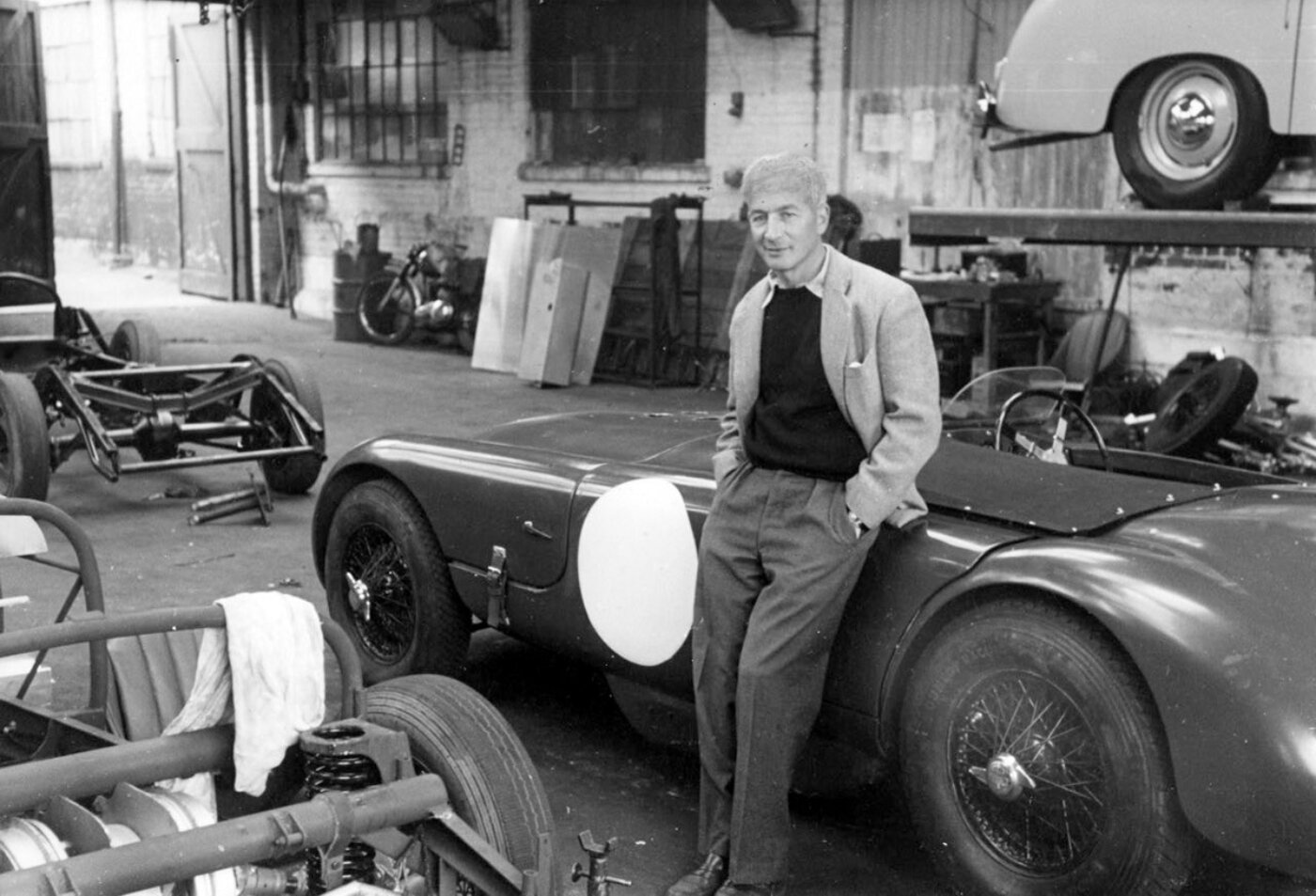
Zora Arkus-Duntov and the Corvette Grand Sport
By Steve Temple
PHOTOS COURTESY OF GM ARCHIVES AND MID AMERICA
Looking back on more than six decades of Corvette history, the 1963 Grand Sport racer still commands a singular level of respect. It was the only car of its era that bested Carroll Shelby’s vaunted Cobra—albeit briefly before GM yanked them off the track.
The man behind the Grand Sport was Zora Arkus-Duntov. Not only that, he was utterly indispensable to the early development of the Corvette. Initially an assistant staff engineer, but eventually Chief Engineer for the Corvette program, he was instrumental in transforming its debut as a sweet little roadster into a ferocious fighter.
Not only will there never be another auto executive like him, few men have ever enjoyed such a colorful life: racer, engineer, pilot, gold smuggler, bon vivant, showboat—he did it all. Comparisons to other historical figures fail us, as there’s simply nobody of his class or character.
While Zora’s life story has been related numerous times in books and magazines, this retelling will focus not only his pivotal contributions to the Corvette and the Grand Sport specifically, but also include some little-known anecdotes and engineering feats. Before spotlighting those areas, though, it’s important to grasp the depth of his background.
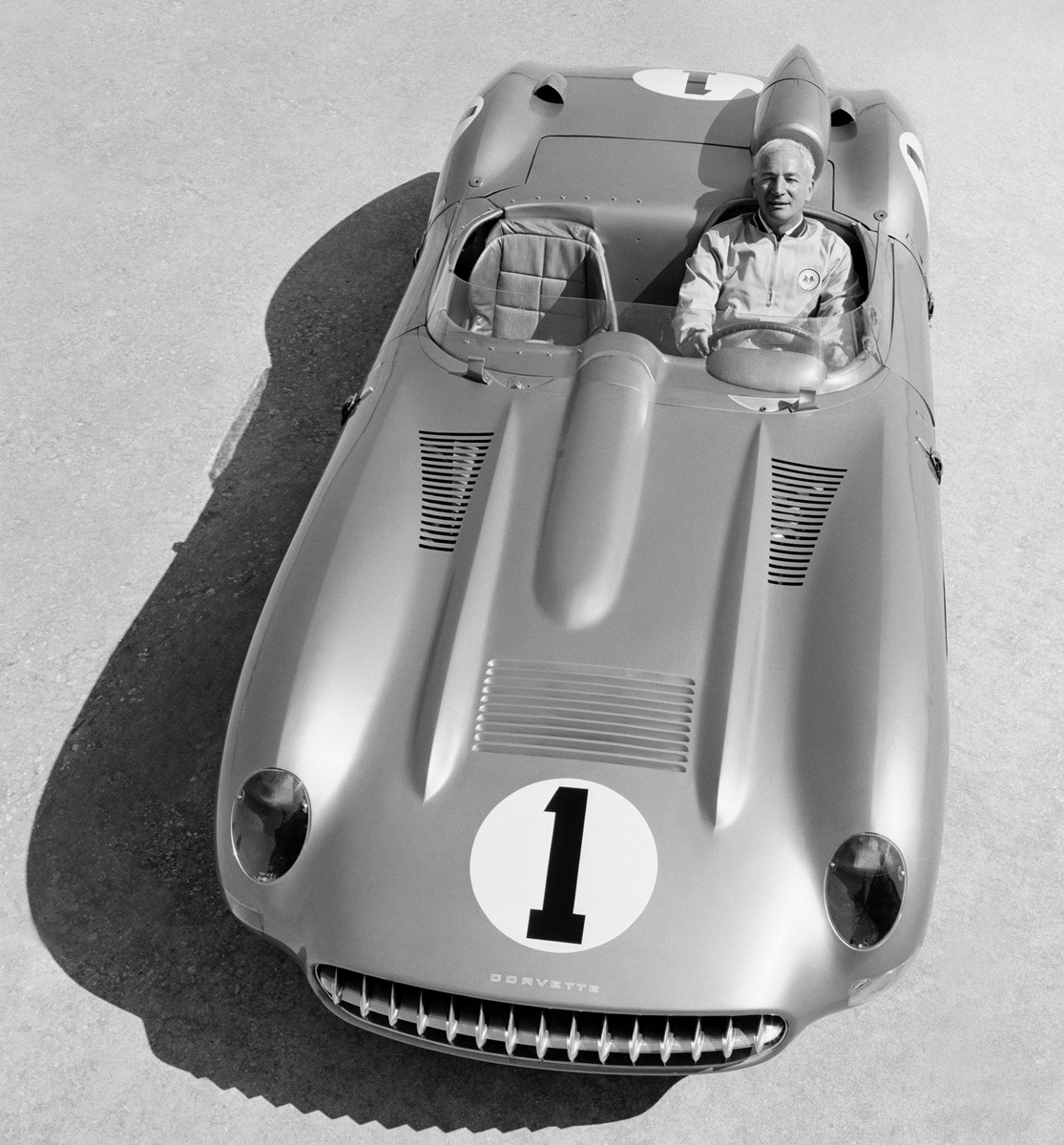
Born in Belgium in 1909 to Russian-Jewish parents, but raised in Berlin and Leningrad, Zora took on his unusual hyphenated surname as a teenager when his mother remarried. She found his penchant for tearing through the streets of Berlin on a motorcycle to be a parental nightmare, and insisted he drive a car instead. So he did the “safe” thing and bought a racing vehicle instead. His ability to strike a balance between following the letter of the law and getting away with murder would become a recurring theme in his later corporate life at GM.
Throughout his Corvette career, Zora fought with GM management over the role racing played in shaping the direction of the production car. In an era in which corporate-sponsored competition was officially banned, he was legendary for putting together secret prototypes and dealer-sold, “backdoor” racing packages. That should come as no surprise, considering his exploits on the road courses of Europe.
Prior to his pursuits on the track, though, he earned a formal degree in mechanical engineering, and wrote technical papers on subjects such as four-wheel drive and steering, heady stuff back in the 1930s. This innovative mindset would never leave him, even though it became a personal frustration for him as well, as we’ll relate.
When WWII loomed, Zora eluded the Nazis by hiding out in a French bordello, and then fleeing to the States, where he and his brother Yura established Ardun Mechanical. The firm became noteworthy for developing hemispherical, overhead-valve, aluminum cylinder heads for the Flathead V-8 that produced an unprecedented output of 300 hp. There’s no indication that the execs at Ford ever took note of this remarkable achievement, an omission that would later immeasurably benefit Bow Tie enthusiasts.
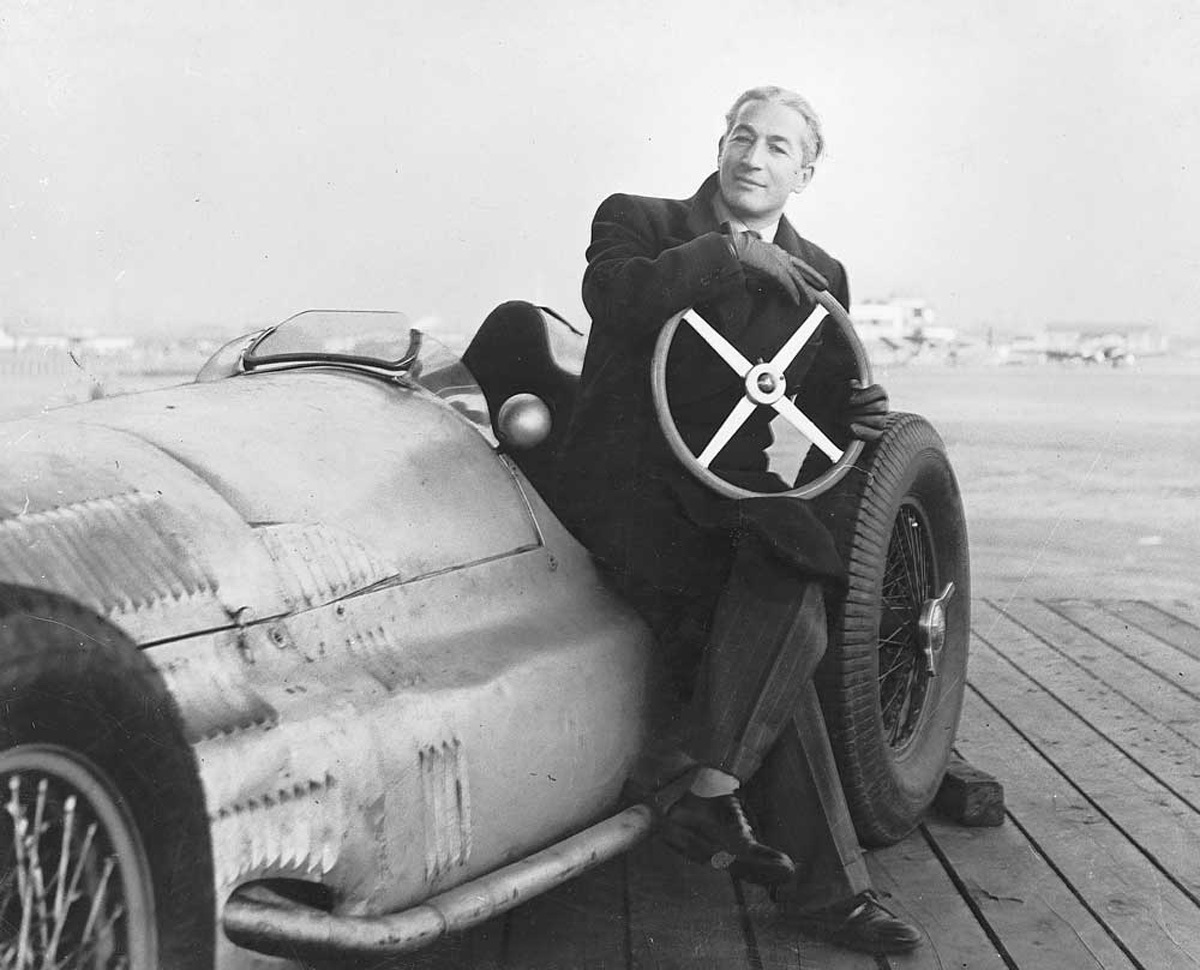
Before Zora’s seminal years with the Corvette, however, he returned to Europe, where he further honed his competition skills, working with Sidney Allard in the development of the Allard J2 race car, which ultimately won at the 24 Hours of Le Mans in ’52.
It would be several more years, though, before a Corvette roared down the Mulsanne Straight, driven by Briggs Cunningham in 1960. Yet the seed of comp Corvettes was planted in 1953, when Zora attended the Motorama at New York City’s Waldorf-Astoria Hotel. He was both enamored and disappointed by the debut of the Corvette roadster, struck by its lithe lines, yet clearly underwhelmed by the tepid power of the Blue Flame Six, along with the inherent limitations of the Powerglide two-speed automatic.
A famous letter to Chevrolet Chief Engineer Ed Cole about suggested improvements followed, and so did his employment at GM in May of 1953. Just a few weeks after being hired, though, he honored a prior commitment to race in the Allard again at Le Mans, even at the risk of alienating his boss Ed Cole. (Which wouldn’t be the last time he would go against the grain of his GM superiors.) Zora would later return to Le Mans again in 1954 and 1955, winning in his engine class driving a 1100cc Porsche.
In December of ’53, Zora produced another prescient document entitled, “Thoughts Pertaining to Youth, Hot Rodders and Chevrolet”. While his diction labored a bit under the influence of his native tongue, the import of his memo was as loud and clear as blowing out a set of side pipes fitted to a big-block Chevy.
Fortunately, Chevy execs listened, and Zora was credited with saving the Corvette from a premature demise, since sales in the first two years of production were pitiful. (One GM staffer even had the temerity to inform Zora in the hallway that they were going to kill the Corvette.) Some have called him the “Father of the Corvette”, but that technically that designation should go to Ed Cole. Instead, Zora was one that gave the Corvette its cojones.
Never one to hold back, Zora knew that only by stuffing the then-new Chevy 265ci V8 into the engine bay could the Corvette be taken seriously. That same engine would also put Chevy into the winner’s circle on the stock car circuit.
Zora was never content as a desk-bound, slide-rule engineer, but was willing to risk his butt in the driver’s seat to prove his point. “To establish the sports car, you have to race it,” is one of his more famous quotes, a dictum that he followed his entire life.
Indeed, after Zora broke the record for the Pike’s Peak hillclimb in a prototype ’56 Chevy, just a few months later, he set the flying mile record at Daytona by blasting past 150 mph in a V8-powered ’56 Corvette. Achieving that required some serious modifications, such as using a camshaft design that he had developed for his Ardun V8 conversions. He got a promotion that year as well, from assistant engineer to Corvette engineering coordinator.
Not content with just a better title, he developed what became known as the Duntov high-lift cam that quite literally bumped up the output of the 265ci V8 to 240 horses. And he later oversaw a technological breakthrough of one hp per cube in the 283ci V8, the first production passenger car ever to do so.
From his experience on the winding road courses of Europe, and given how carburetors were prone to fuel sloshing back then, it became obvious that mechanical fuel injection was a superior approach (a prototype of which appeared on one of the SR-1 and SR-2 race cars). So he strongly pushed for the Rochester Fuel Injection, designed and built with fellow engineer John Dolza.
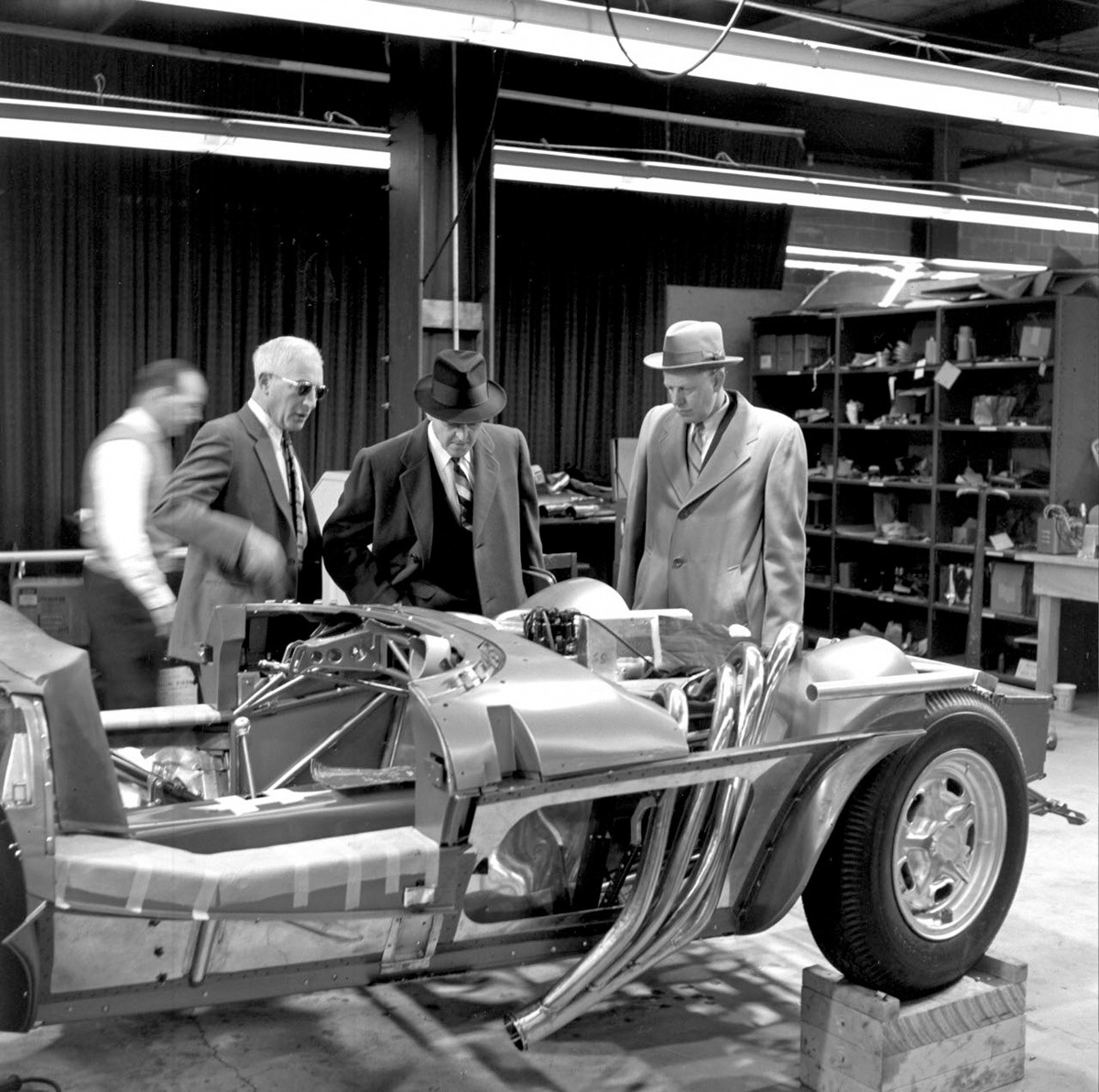
Dolza also worked with Zora in developing a 451 Roots-style supercharger. While other engineers followed up with the actual application, the basic design proved out. The system had and an utterly distinctive look, with a smallish 471 pump and four-nozzle splitter (called a “spider”), mounted upstream of the blower.
After Zora was promoted to director of Chevy’s high-performance vehicles, he now had the clout to develop a Corvette for competing at Le Mans. The magnesium-bodied Super Sport (SS) was tested at the the 12 Hours of Sebring, where it promptly set a track record. But it had to retire from the race due to mechanical issues, never to return as it was hobbled by a new GM new corporate policy. Just when Zora was getting on a roll by stomping a heavy foot on Corvette performance, GM kept chopping the throttle by agreeing to a ban on racing that same year by the Automobile Manufacturers of America. (Some automotive historians point out that this action was more due to GM’s concerns about government enforcement of anti-trust laws than any real aversion to racing.)
It’s not hard to imagine Zora chafing under corporate constrictions, since he kept Corvette racing alive by creating high-performance chassis upgrades for private teams, while providing clandestine technical assistance. Of course, GM’s conservative suits in skinny black ties were hardly pleased by his non-conformist attitude, but Corvette owners remain forever in his debt.
Never one to take things lying down, Zora found a way around the ban (as he had done after his mother discouraged his motorcycle riding in Berlin). He kept promoting Chevy at racing and performance exhibitions, such as with the CERV 1 racer. With its acronym referring to “Chevrolet Engineering Research Vehicle”, this single-seat, open-wheeled Indy-style race car debuted at the Riverside International Raceway in November 1960.
Years later, well into his retirement, Zora told Mike Yager of Mid America Motorworks that the CERV 1 was “his favorite,” and he hid it in his garage along with CERV 2 to prevent GM from destroying it. How did he manage this slight of hand? “He was Zora—he could do anything!” Yager laughs. He came to know him well from numerous special appearances at Mid America’s Corvette FunFest, where Zora would sign autographs all day long, and still take time to speak personally with everyone lining up to meet the master.
The CERV 1, fitted with a 377ci Grand Sport engine (among six others) is now displayed in a place of honor at Mid America. What made the CERV 1 so significant in Zora’s pantheon of performance cars? Lessons learned from the CERV 1 were applied to one of his most significant contributions to Corvette production cars: the ’63 Split Window. Its independent suspension was far lighter and more advanced than that of the solid-axle Corvette.
When fitted with the Z06 performance package (a combination of a 360hp fuel-injected 327, a 36-gallon tank and various chassis upgrades), Zora knew the Corvette was finally coming into its own. He now felt that Chevrolet had finally built a vehicle that wasn’t based on bits from a mediocre family sedan, but could go head-to-head with the grand sports cars of Europe.
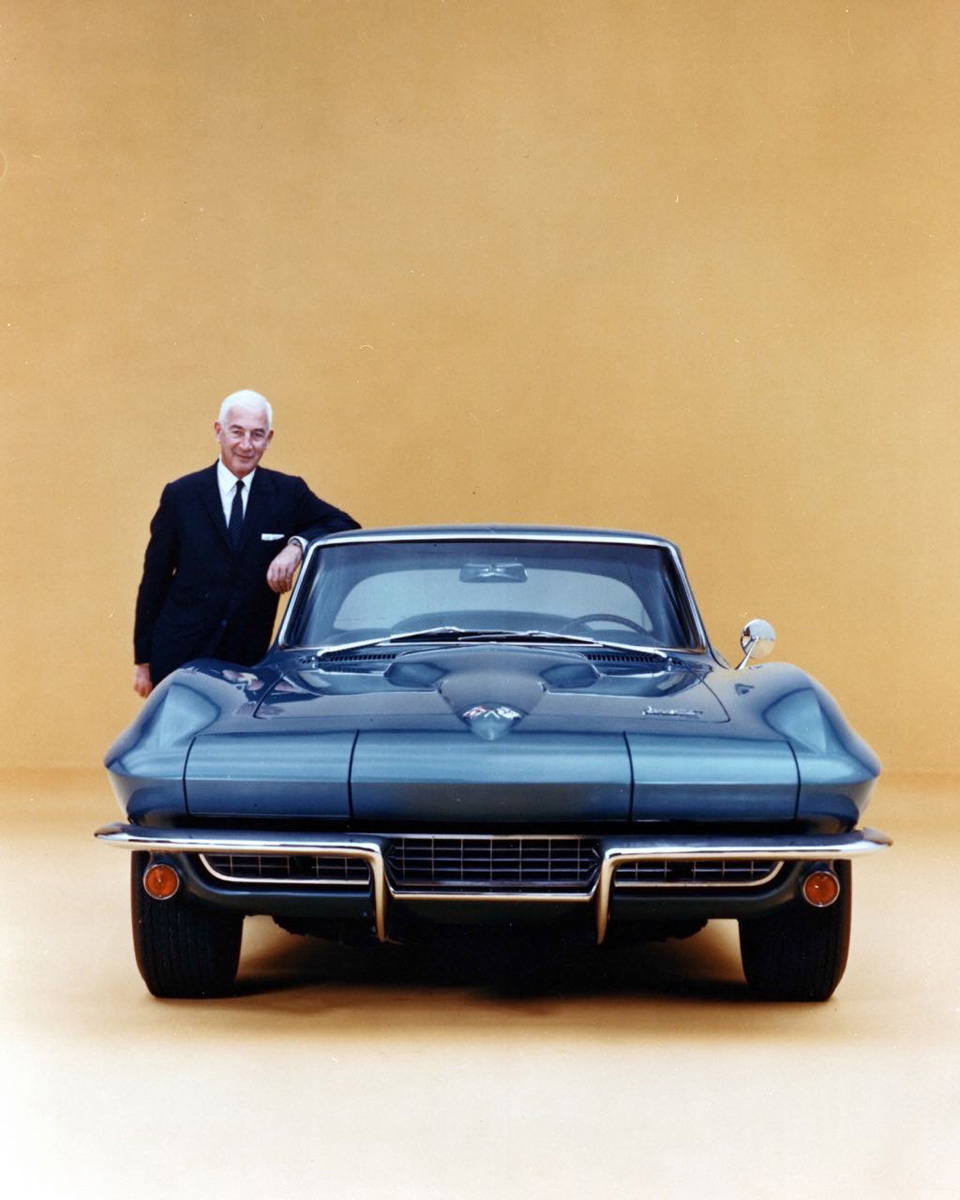
A promotional film clip from the era (seen at the National Corvette Museum) demonstrated his love for the Sting Ray—and the limelight as well. Here was this suave, silver-haired European engineer with an accent as smooth Belgium chocolate, interviewing a slightly tongue-tied racer Dave MacDonald in a buzz cut. No matter, since Zora eloquently touted the virtues of the Sting Ray, looking polished and poised in front of the camera. That was Zora to a T, along with an unwavering dedication to the performance potential of the Corvette.
As Stirling Moss, famed British Grand Prix racer once noted, “Zora Duntov was obviously a great engineer, but he also was charming man. Along with Fangio, Zora was a person of extreme class; there are few people in racing left that you can recall in that way.”
Corvette race driver and performance tuner Dick Guldstrand echoed similar comments about Zora, and more: “When I was just getting started in the early Sixties, and he didn’t know who I was, he would help me with things and give me ideas and would help with the dealership if they wanted some special parts. He was always available...He was the spirit, the real spirit of that Corvette...He didn’t just stand in the wings. He was out there driving it.”
Others who worked with him noted that he brought out the best in his staff, and led by example in his willingness to innovate. Perhaps no better example is the legendary Grand Sport program. Despite friction with upper management, Duntov obtained some unofficial assistance from Chevrolet’s general manager Semon “Bunkie” Knudsen, who provided a black-ops budget and a secret skunkworks. An entire book could be written about these five comp cars (including rumors about the possible existence of a sixth one, as originally planned).
Whatever the final tally, thanks to a their tubular space frame and an aluminum version of the SBC, each of these Cobra-skinners boasted as much as 550 horses and weighed in at 1800 pounds or so, thanks to thinner fiberglass body panels and a super-light tubular frame. Such a radically skewed power/weight ratio would be revisited by Zora in later years.
Zora wanted the Grand Sports to face off against the seemingly unstoppable Shelby Cobras, among other GT-class cars and racing prototypes. That actually happened for a brief shining moment at Nassau Speed Week 1963, when the Grand Sports stomped on some unsuspecting snakes. But it would prove to be short lived, as GM yet again put the kibosh on racing, and yet again Zora had to finagle a way to get them back on the track and into the itchy palms of privateers.
Carroll Shelby was greatly relieved by the absence of official GM sponsorship, as he once noted that due to corporate interference, Zora “...accomplished only 25 percent of what he was capable of...” During my employment at Shelby American as Director of Marketing, Shelby once privately mentioned to me that if GM hadn’t pulled the plug on racing, his Cobras wouldn’t have been as successful—high praise indeed for a serious rival.
“We were outgunned,” the Texas racer admitted about Zora’s design. After all, not only did the Grand Sport have more power and better brakes, but also its tube frame was far more rigid than the 289 Cobra’s bendy ladder frame. Shelby pointed out that the only way it could stick on the road courses was by using Goodyear’s extra soft-compound racing tires.
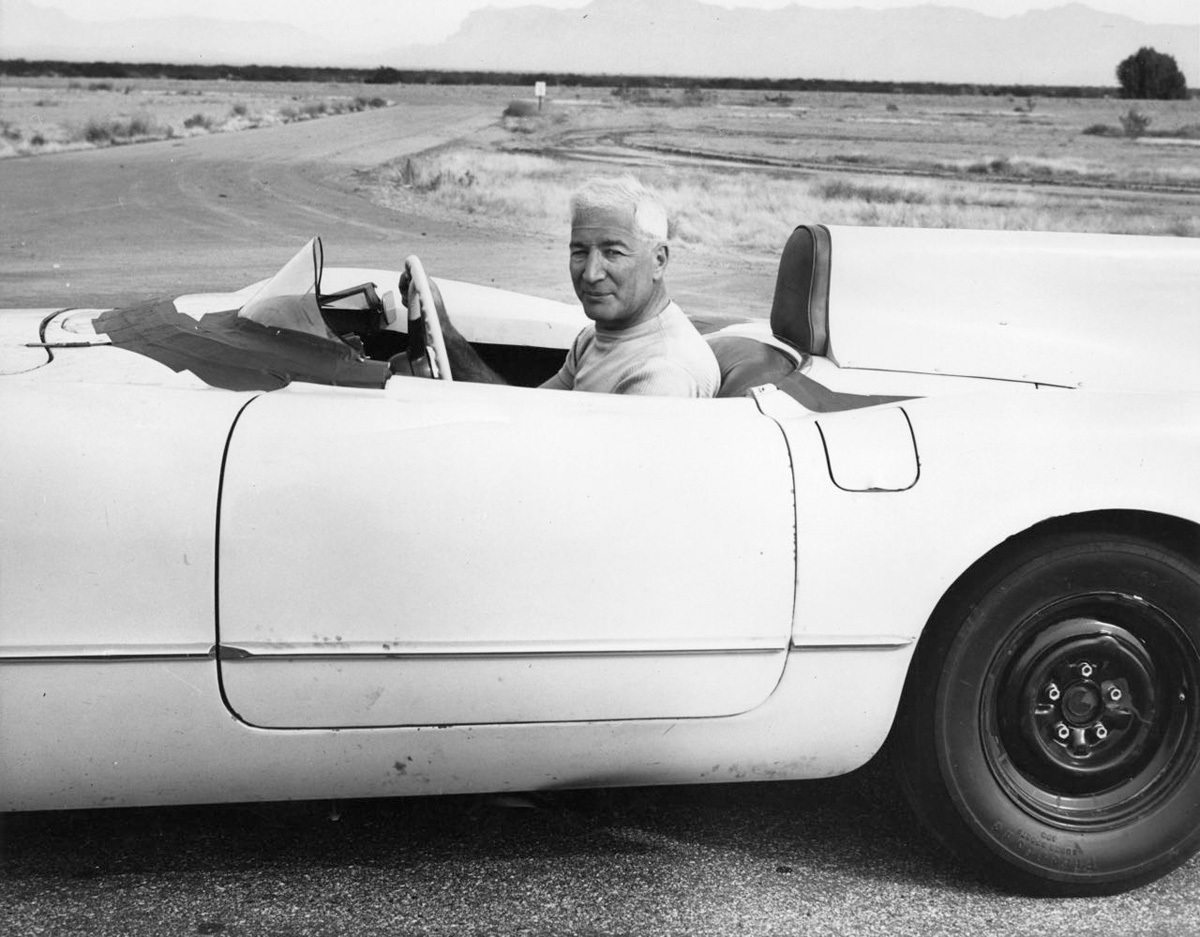
Never content to rest on his laurels, Zora pushed for even bigger engines for the Sting Ray, leading to the legendary L88 big-block, and aluminum ZL-1 in the late Sixties, and the ZR-1 in the early Seventies. Those powerplants were truly extraordinary for the era, now considered priceless precious metal. After smog laws rained on the muscle-car parade, and it would take years to bring back their level of performance with electronic fuel-injection technology.
Even with his many innovations, one of Zora’s unrealized accomplishments was building a mid-engine Corvette. His successor at GM, Dave McLellan (designer of the C4 Corvette), noted that Zora would often say to him, in a heavily accented voice, “Dave, you must do the meed-engine Corvette.” McLellan admits that he had no problem with it from an engineering standpoint, but this configuration was a radical thought, as the Corvette already had a successful reputation for having a long hood with a big V8 up front. So GM Design Chief Bill Mitchell overruled Zora.
“You have to realize that GM stylists could make or break a product manager,” McLellan adds. “Also, the public seemed to have no interest in the mid-engine concepts. They didn’t see them as Corvettes.”
Undeterred, Zora never gave up on the idea. As GM exec Jim Perkins once observed, “Zora was always working toward a goal, make something better...that’s the Duntov legacy.”
After all, Zora the racer knew all too well the advantage of an extreme power/weight ratio, along with balancing the engine in the middle of the chassis. The astounding performance of the Ford GT40, especially at Le Mans, was something he simply couldn’t ignore, and likely influenced his efforts in developing a number of mid-engine concepts—the Astro II, XP-882, and two-rotor XP-897GT—as possible future Corvettes. All of which makes one wonder what the Corvette might have become if he had been allowed to really let loose his considerable engineering talents and instincts.
Even so, Zora would never compromised his engineering integrity and commitment to the Corvette. As one example of many, McLellan related an experience from when they first worked together on a project in the early ‘70s. In an effort to reduce costs, John DeLorean wanted to combine the Camaro and Corvette chassis platforms. Knowing the futility of this exercise, “Zora felt they would be doing it over his dead body,” McClellan observed.
The Aerovette of 1976 provided a tangible indication of Zora’s advanced vision, as it initially featured a four-rotor Wankel rotary. Yet cost considerations and panic from the ’73 “energy crisis” (an absurd expression in retrospect) hobbled the program due to the rotary’s notoriously high fuel consumption, so a transverse-mounted V8 was fitted instead. “Too much bureaucrat,” was his pithy explanation for GM’s refusal to move forward with a mid-engine design.
Zora was hardly pleased, either, with how emasculated the Corvette became after his retirement in 1975. Performance technology hadn’t caught up yet with emissions requirements, as the base Corvette was only producing 165 hp, and the optional L82 struggled to deliver 205 horses.
Acting as a consultant to American Custom Industries, (known for its previous work on the Greenwood Corvette in the early Seventies), Zora agreed to putting his name on a Duntov special edition model—as long as it had a turbocharger. At that time, turbos were all the rage, and he had already envisioned a turbo V-6 as a possible powerplant for the Corvette.
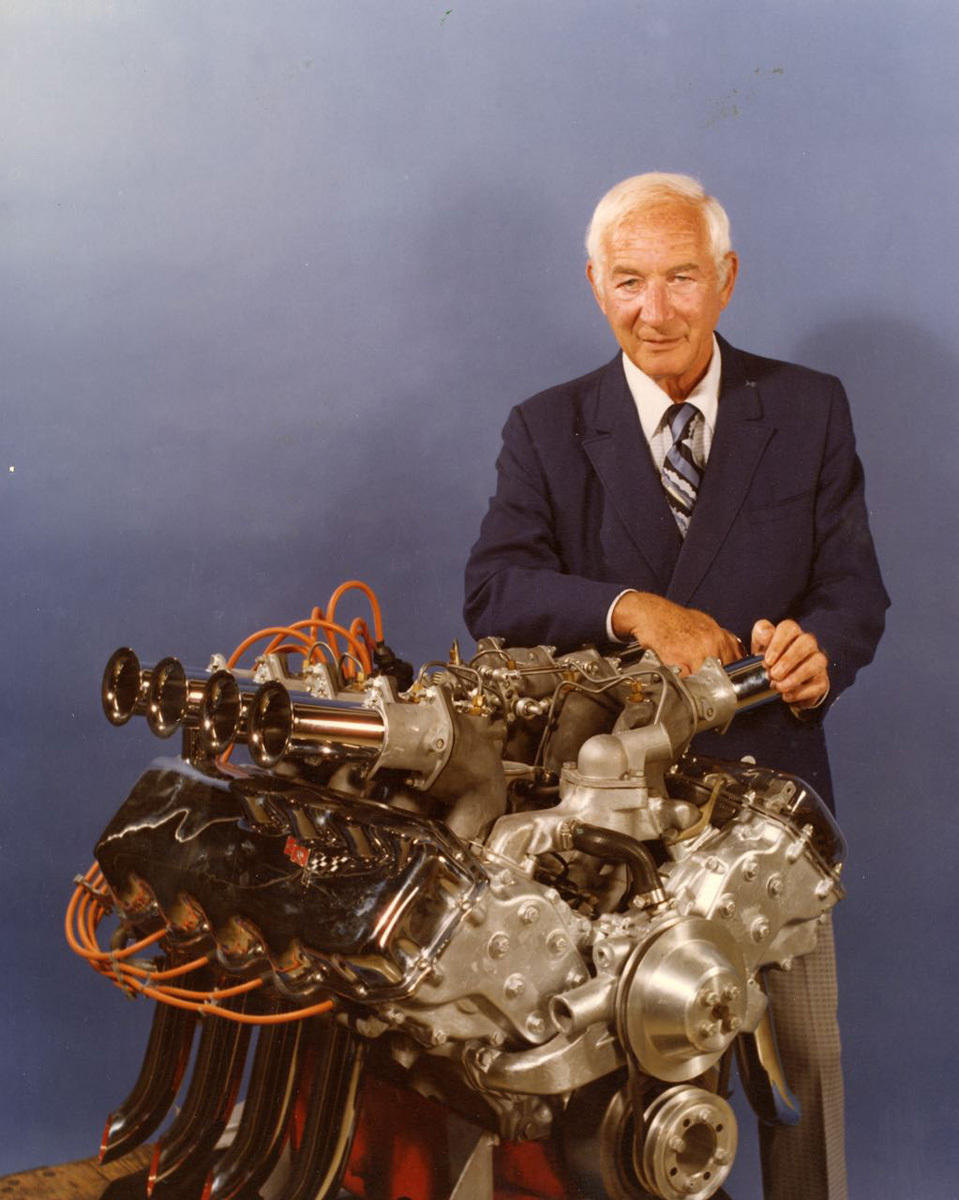
Putting on this power adder was great in theory, not in practice. Excess heat and only marginally better performance, along with styling issues and high cost, all converged to cripple the program. Sadly, looking back on the Duntov Corvette in 1991, he observed that, “The less said about that car the better.”
Another telling instance of Zora’s character took place at the ’92 debut of the Stingray III concept car, which served as an inspiration for design the C5. McLellan relates how the car had a stylish three-bolt wheel, which made absolutely no sense from an engineering standpoint. (There’s was even a sign on the dashboard warning not to exceed 50 mph.) When asked to pose for a photo with the car, Zora refused to sit in or even be associated with it, due to its shortcomings from a purely mechanical standpoint. “He was very much a technical engineer, very good at it,” McLellan notes. “The history of the Corvette shows that.”
Zora’s is passion for Corvette performance would carry him to the grave, literally. To his dying day on April 21, 1996 he wanted to be in a race car. Even though he wasn’t able to be buried in one, he got the next best thing: his ashes are interred at the National Corvette Museum. For a true, red-blooded Corvette owner, visiting this hero’s shrine is like standing on sacred ground.

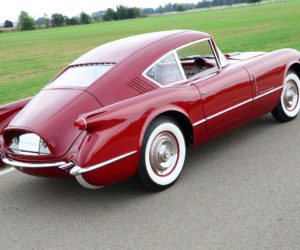
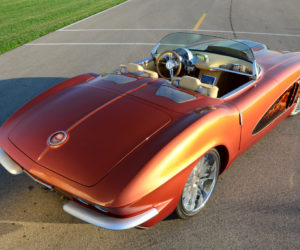
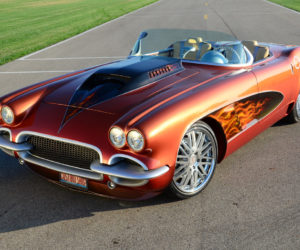
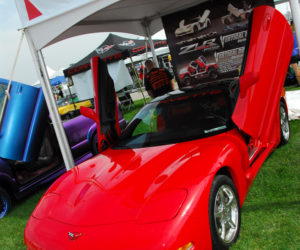
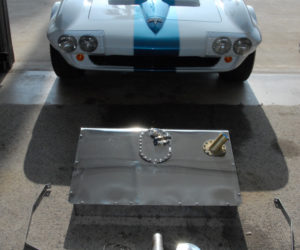
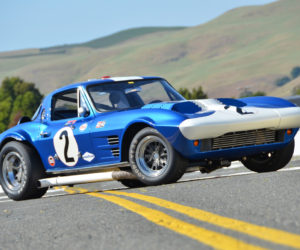




Comments for: A TRULY GRAND SPORT
comments powered by Disqus